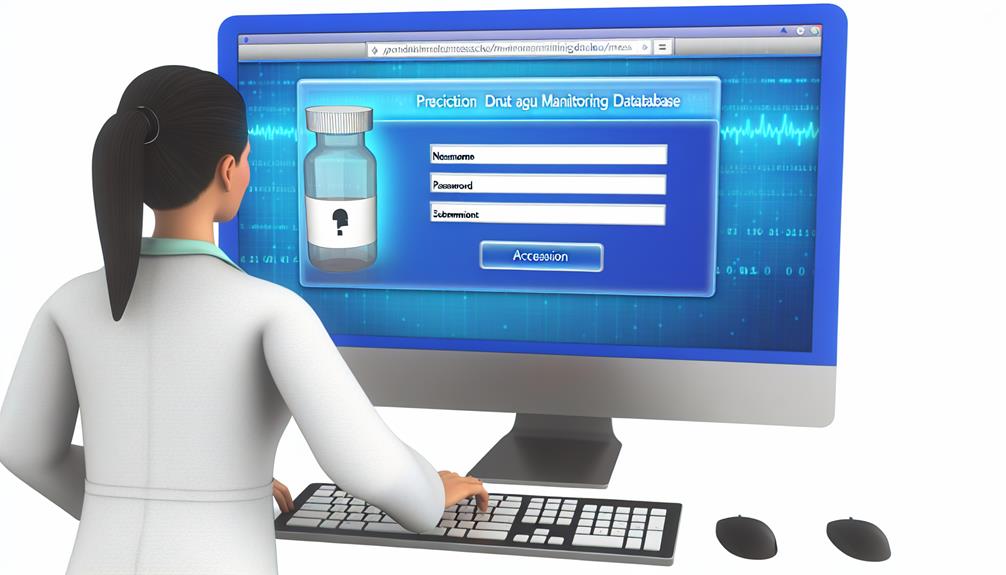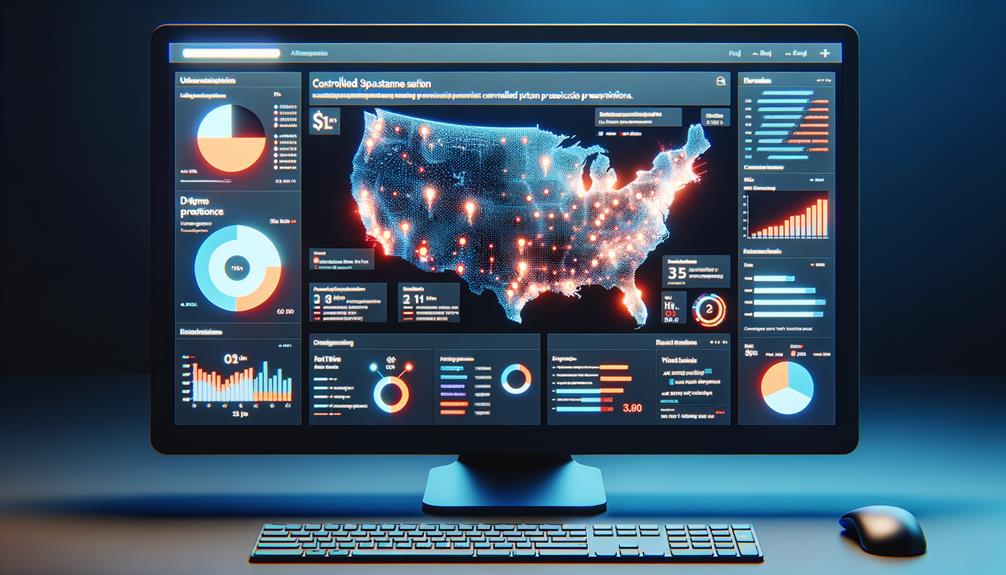Are you a healthcare professional looking for a practical guide on how to effectively track controlled substance prescriptions? Look no further.
Imagine being able to seamlessly navigate through prescription drug monitoring programs and effortlessly access valuable information that can help you combat the opioid crisis.
In this comprehensive how-to guide, you will discover the benefits of implementing prescription drug monitoring programs, learn the steps to access and utilize prescription drug monitoring databases, explore best practices for tracking controlled substance prescriptions, and uncover solutions to the challenges faced in prescription drug monitoring programs.
Get ready to take control and make a difference in the fight against substance abuse.
Overview of Prescription Drug Monitoring Programs

Prescription Drug Monitoring Programs (PDMPs) provide a comprehensive system for tracking controlled substance prescriptions. These programs aim to address the growing concern of prescription drug abuse and diversion. However, the implementation of PDMPs has faced various challenges.
One of the major implementation challenges is ensuring the interoperability of PDMP systems across different states. Each state has its own PDMP, and it's crucial to establish a seamless sharing of data between these systems. This requires the development of standardized protocols and technologies to facilitate data exchange.
Another challenge is maintaining data privacy while sharing information through PDMPs. Patient confidentiality is of utmost importance, and strict measures must be in place to protect sensitive health information. PDMPs should adhere to privacy laws and regulations to prevent unauthorized access and ensure the secure handling of data.
To overcome these challenges, collaboration between healthcare providers, pharmacies, and law enforcement agencies is essential. It's crucial to establish clear guidelines and policies for data sharing, storage, and access. Regular audits and monitoring should be conducted to ensure compliance and safeguard against potential breaches.
Benefits of Implementing Prescription Drug Monitoring Programs
Implementing Prescription Drug Monitoring Programs (PDMPs) offers numerous benefits in combating prescription drug abuse and diversion. These programs have several advantages that can have a significant impact on the overall management of controlled substances.
One of the key benefits of PDMPs is the ability to identify potential cases of drug abuse or diversion. By monitoring prescription drug data, healthcare providers can identify patterns of behavior that indicate misuse, such as multiple prescriptions from different doctors or excessive quantities being dispensed. This early detection can help prevent individuals from obtaining and misusing prescription drugs.
PDMPs also provide healthcare professionals with access to comprehensive patient medication histories. This enables them to make more informed decisions when prescribing controlled substances and avoid potential drug interactions or overdose situations. By having access to this information, healthcare providers can ensure patient safety and improve the quality of care.
Furthermore, PDMPs can help identify and address inappropriate prescribing practices. By analyzing the data collected, authorities can identify healthcare providers who may be overprescribing or engaging in illegal activities. This information can then be used to educate providers, enforce regulations, and prevent the misuse of prescription drugs.
Steps to Access and Utilize Prescription Drug Monitoring Databases

To access and utilize prescription drug monitoring databases effectively, healthcare professionals must follow a series of straightforward steps. These steps ensure that healthcare professionals can access the necessary information and utilize it appropriately for patient care. Here are the steps to access and utilize prescription drug monitoring databases:
- Step 1: Obtain proper credentials: Healthcare professionals need to apply for access to the prescription drug monitoring database and obtain the necessary credentials.
- Step 2: Log in to the database: Once credentials are obtained, healthcare professionals can log in to the database using their unique username and password.
- Step 3: Enter patient information: Healthcare professionals can enter patient information, such as name, date of birth, and prescription details, into the database to retrieve relevant data.
- Step 4: Analyze the data: After retrieving the patient's prescription history, healthcare professionals can analyze the data to identify any potential issues, such as overprescribing or drug interactions.
Best Practices for Tracking Controlled Substance Prescriptions
Consider incorporating the use of data analytics and regular monitoring as essential components of effectively tracking controlled substance prescriptions. By leveraging data analytics, you can gain valuable insights into prescription patterns, identify potential abuse or diversion, and make informed decisions to mitigate risks. Regular monitoring allows you to stay updated on prescription activity, ensuring timely intervention and appropriate actions when necessary.
However, it's crucial to prioritize data privacy and regulatory compliance when implementing tracking practices. Ensure that all collected data is securely stored and accessible only to authorized personnel. Adhere to applicable laws and regulations, such as the Health Insurance Portability and Accountability Act (HIPAA), to protect patient confidentiality and avoid legal repercussions.
Implementing best practices for tracking controlled substance prescriptions involves establishing clear policies and procedures. Train healthcare professionals and staff on the importance of data privacy and regulatory compliance. Regularly review and audit your tracking system to identify any vulnerabilities or areas for improvement. Collaborate with other stakeholders, such as law enforcement agencies and regulatory bodies, to share information and enhance tracking efforts.
Challenges and Solutions in Prescription Drug Monitoring Programs

As you encounter the challenges of tracking controlled substance prescriptions, it's important to explore the solutions available in prescription drug monitoring programs. These programs are designed to help healthcare providers and regulatory agencies keep track of controlled substance prescriptions, ensuring patient safety and preventing abuse. However, implementing and maintaining these programs can be challenging.
Here are some common challenges and their corresponding solutions:
- Data privacy: Protecting patient information is crucial when it comes to prescription drug monitoring programs. Implementing robust security measures, such as encryption and access controls, can safeguard sensitive data and ensure compliance with data privacy regulations.
- Legal requirements: Prescription drug monitoring programs must adhere to various legal requirements, including state and federal laws. Staying up-to-date with these regulations and implementing necessary changes is essential to ensure compliance and avoid legal issues.
- Interoperability: Integrating prescription drug monitoring programs with existing healthcare systems can be complex. Developing standardized data formats and establishing data sharing agreements can promote interoperability and streamline information exchange.
- User adoption: Encouraging healthcare providers to use prescription drug monitoring programs can be a challenge. Providing training and education on the benefits of these programs, as well as addressing any concerns or misconceptions, can help increase user adoption.








